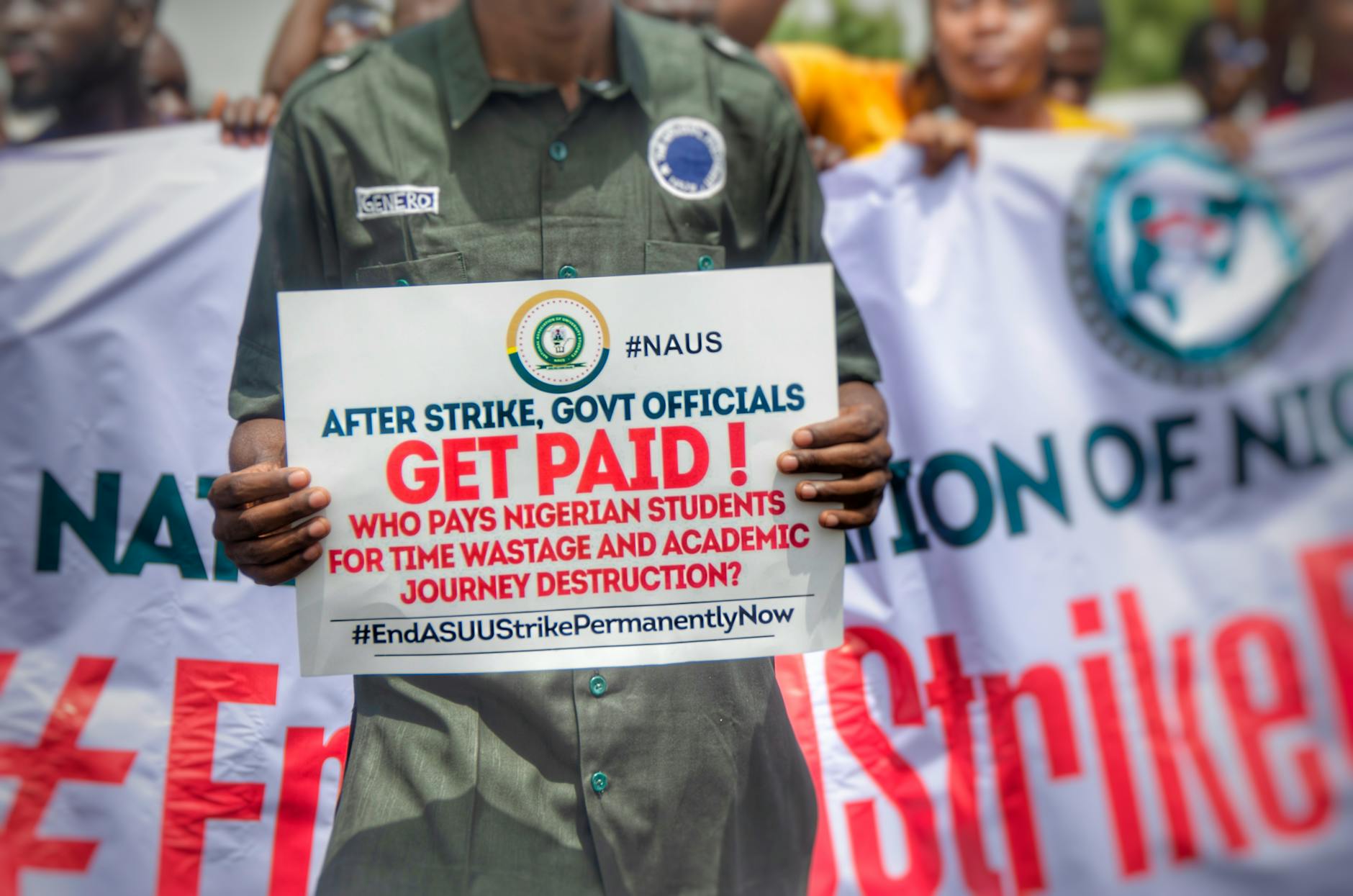- How Project 2025 Will Affect You!
- Pages
- Project 2025 Explained
Project 2025 Explained: Its Controversial Agenda and Potential Consequences
Project 2025 is a detailed policy agenda developed by the Heritage Foundation and backed by over 100 conservative groups. Introduced in 2023, it outlines a vision for a future conservative administration by redefining federal government operations and expanding presidential power. While supporters view it as a roadmap for transformative governance, critics argue it risks dismantling key democratic systems. The plan has faced backlash over proposals involving civil rights rollbacks, public health risks, and threats to government checks and balances. This post focuses on these controversies and highlights the potential negative impacts of its implementation.
What is Project 2025?
Project 2025 is a political initiative created as a blueprint for overhauling the United States federal government, particularly under a potential future conservative administration. Developed by The Heritage Foundation alongside contributions from over 100 conservative organizations, the project takes an ambitious approach toward reshaping policy-making and governance. Below, we explore its origins, key objectives, and the strategies behind its implementation.
Origins and Development
The Heritage Foundation, a leading conservative think tank, initiated Project 2025 in collaboration with a coalition of over 100 conservative organizations. This comprehensive effort was designed as a policy strategy to prepare for a second Trump administration or any conservative presidency. The program’s main focus is to ensure a seamless transition of power while equipping the next administration with personnel and policies aimed at fundamentally restructuring government operations. Heritage's forward-looking approach underscores their commitment to reshaping the policy framework to align with conservative ideals. Read more on the Heritage Foundation's vision for Project 2025 here.
Key Objectives and Components
At its core, Project 2025 focuses on specific objectives it seeks to accomplish under a conservative-led federal government. These goals reflect an emphasis on ambition yet invite significant criticism:
Government Restructuring: Reshape the executive branch to increase centralized power within the president's office, diminishing roles of independent agencies and career civil servants.
Federal Agency Reductions: Strip federal agencies of significant regulatory authority, limiting what critics view as bureaucratic overreach in areas like public health, environmental protections, and more.
Ultra-Conservative Policies: Strong pushes for socially conservative agendas, possibly affecting civil rights, women's issues, and climate change policies.
Critics see these objectives as a regressive attempt to roll back decades of regulatory frameworks and social advances. However, proponents argue it’s about curtailing expansive government to return power to local authorities and individual states. For an overview of Project 2025, visit its official site.
Policy Playbook and Strategy Implementation
At the heart of Project 2025 lies its strategic handbook, the 900-page Mandate for Leadership. This extensive document functions as a guide for implementing policies, staffing government positions, and fundamentally shifting governance practices.
Key tools include:
Mandate for Leadership: Often referred to as the project’s Bible, this manual comprises detailed plans on policy changes across nearly every federal agency. It lays the foundation for restructuring efforts and has been compared to a manifesto for conservative governance. Explore the full text of the Mandate for Leadership here.
Personnel Database: A living database of vetted individuals aimed at filling key federal roles. This initiative ensures that officials share the project’s ideological alignment before critical decisions are made.
Unpublished 180-Day Transition Playbook: Targeted for use during the first months of a new administration, this playbook offers step-by-step instructions for executing the project’s policies and restructuring goals quickly and decisively.
These components work in tandem to equip future administrations with an operational plan, leaving little to chance once control is assumed. For further insights on the ‘Mandate for Leadership’ and Project 2025’s policy agenda, click here.
These strategic elements aim to solidify a foundation for governance, though critics argue they could heavily erode institutional safeguards. As we continue to analyze Project 2025, its controversies and implications come sharply into focus.
Potential Negative Effects on Democracy
Project 2025 has garnered substantial criticism from civic advocates and scholars who argue that its implementation could profoundly undermine the principles of democracy. From concentrated presidential power to suppressive election policies, the risks to democratic stability are significant.
Expansion of Executive Power

Photo by Sides Imagery
A key component of Project 2025 is its focus on consolidating power in the hands of the president. This includes proposals to broaden the scope of the Insurrection Act, a controversial 1807 law that allows presidents to deploy military forces domestically under certain circumstances. Critics warn that this could lead to the misuse of emergency powers to suppress protests and dissent, dangerously eroding civil liberties. Learn more about potential misuse of the Insurrection Act here.
Additionally, expanded surveillance tactics highlighted in Project 2025's playbook raise red flags. Tools like the Foreign Intelligence Surveillance Act (FISA) could be used to monitor activists and journalists under the guise of national security, dampening free speech and reducing government accountability. Explore how expanded executive powers could threaten freedoms.
Erosion of Checks and Balances
Democratic institutions rely on the separation of powers—a safeguard that Project 2025 seems poised to undermine. Proposals to concentrate authority within the executive branch could weaken the judiciary and legislative branches' ability to hold the president accountable. This systemic imbalance threatens the very mechanisms designed to prevent authoritarian governance. Read about how checks and balances are at risk.
Historically, efforts to erode checks and balances have resulted in executive overreach that disregards public interest. Critics argue that Project 2025's strategies could mirror such instances, leading to policymaking directed solely by a central executive authority. For example, judicial review—a cornerstone of democratic governance—could be undermined as courts may lose their power to challenge unconstitutional actions.
Impact on Elections and Voting Rights
Fair elections are the bedrock of any democracy. However, Project 2025's policy objectives include altering election laws and tightening voter access, raising alarms about voter suppression. From stricter ID requirements to reduced early voting periods, these measures could disproportionately affect marginalized communities. According to experts, such regulations mirror tactics used in the past to disenfranchise voters and skew democratic representation. Learn why voting rights are at risk.
Critics also cite concerns that restructured election policies would create loopholes for gerrymandering, further distorting electoral outcomes. This could significantly weaken the principle of "one person, one vote," making it harder for citizens to have their voices heard. The outcome? A government less reflective of the nation’s diverse electorate. Understand more about changes in voting rights here.
These policies present a troubling vision for democracy. Each element of Project 2025—from expanded executive authority to restrictive voting regulations—signals a move away from equitable governance and toward a highly centralized, less inclusive system.
Project 2025 presents significant challenges to social policies and civil rights, targeting key areas like abortion access, LGBTQ+ protections, and education policies. Critics argue that these measures aim to curtail freedoms under the guise of reform, reversing decades of progress. Below, we explore the concerning implications within these areas.
Restrictions on Abortion and Healthcare Access
Reviving the 150-year-old Comstock Act is a critical component of Project 2025's agenda, posing serious risks to reproductive healthcare. The Comstock Act would criminalize mailing abortion-related materials, effectively cutting off access to abortion pills and tools for safe procedures. This change could lead to a de facto national abortion ban, disproportionately impacting people in states with already restricted access. Critics emphasize the potential rise in healthcare inequities and dangers to women’s health if this outdated law is weaponized (source).
Reviving the Comstock Act isn't just hypothetical—it could force medical professionals to avoid essential care, fearing legal repercussions. Without safe options, many could resort to unsafe procedures or be left with no options at all. This policy sparks concern that more lives will be needlessly endangered (source).
Threats to LGBTQ+ Protections
Project 2025 rolls back notable advancements in LGBTQ+ rights by challenging protections in workplaces, schools, and healthcare settings. It explicitly targets anti-discrimination regulations, including rescinding rules on transgender healthcare access and protections against discrimination in federally funded programs. For example, proposals include eliminating “LGBTQ+ equity” policies in health services (source).
The rollback could particularly harm students, as it also includes measures allowing discrimination based on sexual orientation and gender identity in schools. Since safe and inclusive learning environments are critical for LGBTQ+ youth, these actions could lead not only to heightened harassment but also to increased mental health challenges for these groups (source).
Changes in Education Policies
Education policies under Project 2025 advocate for censoring discussions on race, gender, and systemic oppression, which raises alarms about academic freedom and honesty in classrooms. Proposals aim to restrict teachings on critical race theory (CRT) and other social issues, with vague, broad laws that leave educators uncertain and fearful of repercussions. Teachers have reported not knowing how to discuss history or current events honestly without crossing ambiguous lines (source).

Photo by Fortune Comfort
By removing nuanced conversations about race and oppression, these policies risk producing a generation of students unable to address systemic issues. This could perpetuate inequities and whitewash history, depriving students of the tools needed for critical thinking and advocacy (source).
Restricting education in this way is not merely an oversight—it’s a deliberate effort to shape societal perspectives and stifle dissenting voices that question systemic inequities. As these policies take root, their long-term consequences could be generational, rewriting narratives and limiting progress toward equality (source).
Environmental Concerns Under Project 2025
While Project 2025 is framed as a way to streamline federal operations and promote conservative values, its environmental agenda has sparked significant alarm. Critics argue that key proposals within the plan could severely harm ecosystems, weaken protections, and prioritize corporate interests at the expense of public welfare.
Reduction in Environmental Protections

Photo by Polina Tankilevitch
One of the primary environmental drawbacks of Project 2025 is the deliberate weakening of Environmental Protection Agency (EPA) standards. This includes repealing or "pausing" enforcement of stringent environmental laws that safeguard clean air and water. The Heritage Foundation's blueprint explicitly aims to roll back pivotal rules surrounding greenhouse gas emissions, endangering ongoing efforts to combat climate change (source).
Moreover, the initiative seeks to impose new hurdles on the scientific studies the EPA considers when setting regulations. By requiring stricter evidentiary standards, it could delay, if not entirely derail, efforts to regulate harmful pollutants. These changes would disproportionately harm vulnerable communities already suffering from toxic exposure (source).
The introduction of "pause and review" teams under this plan further escalates concerns. Critics claim these teams would obstruct the implementation of critical environmental policies, giving polluters legislative breathing room to continue hazardous practices unchecked (source).
Focus on Industry Interests
Project 2025 overtly aligns itself with industrial priorities, raising questions about its commitment to sustainability. The proposed shift in focus includes policies that benefit fossil fuel reliance, chemical manufacturing, and large-scale agriculture—all known contributors to environmental degradation (source).
Under the initiative, agencies like the EPA would abandon their emphasis on sustainable practices and instead prioritize economic growth under the guise of "energy independence." This direction could lead to expanding land drilling, undercutting renewable energy efforts, and loosening protections for wildlife and ecosystems (source).
Critics have also flagged efforts to dismantle the Office of Energy Efficiency and Renewable Energy (EERE). This reconfiguration would defund projects aimed at tackling climate change, shifting resources to methods that bolster outdated fuel industries (source).
With clear favor for industry players, Project 2025 risks sacrificing long-term environmental health for short-term economic interests. This approach jeopardizes not only the planet's ecosystems but also the communities relying on clean, sustainable environments for their well-being.
Counter Efforts and Public Resistance
As Project 2025 sparks concern across sectors, various organizations and individuals are rallying to counter its proposed policies. Resistance plays out on multiple fronts, including advocacy campaigns, legal challenges, and grassroots efforts aimed at raising awareness and inspiring action. Below, we explore the strategies in place to push back against this controversial initiative.
Advocacy and Awareness Campaigns
Advocacy groups are actively working to educate the public about the dangers of Project 2025 while mobilizing opposition. Organizations like the American Civil Liberties Union (ACLU) have been outspoken, highlighting concerns about the project's threats to democratic values and civil rights. Through informative campaigns, petitions, and policy briefings, these groups aim to engage citizens and policymakers alike. Explore the ACLU’s breakdown of Project 2025's implications.
The National Urban League has also taken a stand, launching online efforts to inform Americans about the workplace and social repercussions tied to the initiative, such as potential rollbacks in anti-discrimination protections. Their “STOP Project 2025” campaign effectively underscores how the policies could harm marginalized communities. Learn more about efforts to halt Project 2025.
Meanwhile, Democracy Forward is demystifying the project’s 900-page Mandate for Leadership, providing clear, digestible information to empower citizens to understand the agenda's far-reaching impacts. Its "People's Guide to Project 2025" equips communities with insights to combat misinformation and organize locally. Read Democracy Forward’s People’s Guide here.
Litigation and Legal Strategies
Legal challenges are a critical element in opposing Project 2025. Opponents have flagged multiple areas of concern, from potential violations of constitutional law to threats against regulatory frameworks that protect public welfare.
One avenue of resistance involves challenging policies in court as they are enacted. For instance, groups like Democracy Forward are tracking cases tied to Project 2025 and actively preparing fact sheets for court resistance. These efforts aim to block harmful elements of the initiative before they gain traction. Read more about the legal strategies against Project 2025.
Public interest firms are also gearing up for long-haul battles. From environmental deregulation to voter suppression, lawsuits challenging Project 2025 are expected to flood the courts in upcoming years. Legal precedents set by organizations like Just Security could play a significant role in dismantling proposals that overreach executive authority. Explore ongoing litigation tracking efforts.
Community Organizing and Mobilization
Grassroots organizing has emerged as a powerful tool against Project 2025. Local activists are working within communities to build coalitions, host educational town halls, and lead protests denouncing the initiative's platform. These efforts demonstrate the strength of collective action in countering sweeping policy changes that prioritize centralized power at the expense of public interest.
Groups like Common Cause are mobilizing everyday citizens to engage their elected officials and demand accountability. Their “STOP Trump’s anti-democracy Project 2025” campaign calls for active resistance through petitions and direct outreach. Learn how communities are taking a stand.
In addition, organizations like the ACLU are supporting localized advocacy networks to combat the harmful effects of specific policies outlined in Project 2025. By amplifying underrepresented voices and providing tools for legal action, they empower individuals to resist policies that undermine their rights. See how the ACLU is fostering local advocacy action.
The pushback against Project 2025 reflects a collective commitment to preserving fundamental democratic values. Through a combination of education, litigation, and grassroots organizing, these counter-efforts aim to safeguard the rights, freedoms, and well-being of affected communities.
Conclusion
Project 2025 represents a dramatic shift with far-reaching consequences for democracy, civil rights, education, and the environment. By consolidating executive power, targeting protections for marginalized groups, and undermining regulatory frameworks, it risks eroding key pillars of democratic governance. The potential impacts, from voter suppression to environmental degradation, highlight the urgency of public awareness and action.
Challenging policies rooted in exclusion and regression requires collective effort. Advocacy, legal intervention, and grassroots mobilization are already playing vital roles in pushing back against this dangerous agenda. As these efforts grow, it’s essential for individuals to stay informed, engage with their communities, and speak out to safeguard fundamental rights and freedoms.
The future depends on vigilance and active participation. Project 2025 is a stark reminder of how quickly progress can be undone—and why standing up for democratic values remains more important than ever.